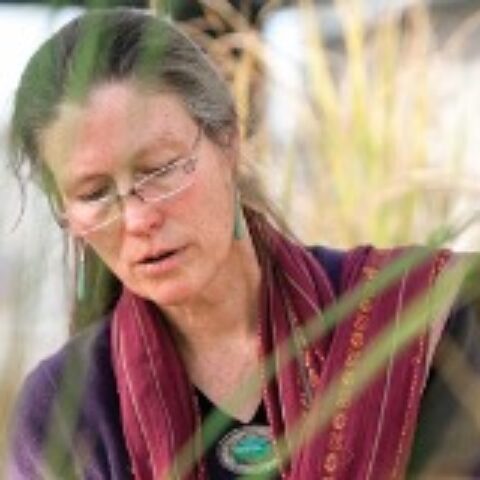Fall 2025 Lectures

What’s in a grain of rice?
Susan McCouch, Professor of Plant Breeding and Genetics Emerita
Dec. 11th from 10:30-11:30am- In Person & Zoom
Description: This talk will introduce you to the diversity of rice as seen through the eyes of a rice geneticist and breeder. McCouch was introduced to the world of international rice research in the mid-1980’s as a graduate student at Cornell, and it opened up a world of exploration and discovery. Her first scientific encounters with the rice plant were through the lens of molecular biology but she soon connected with people, places and perspectives that gave her a much deeper appreciation of the organism itself, as well as those who cultivate, consume and care for it. Today, she will share with you some insights about the diverse qualities of rice that make it such an important crop around the world and such a sacred food for those who depend on it.
Bio: Susan McCouch is the Barbara McClintock Professor of Plant Breeding and Genetics Emerita in the School of Integrative Plant Science at Cornell University. She received her PhD from Cornell in 1990 and she and her family spent 5 years with the International Rice Research Institute (IRRI) in the Philippines before joining the Cornell faculty in 1995. She is known for developing the first molecular genetic map of rice and for her key and sustained role in turning rice into a model for genetics and breeding research globally. She retired from Cornell in January of 2024. Prior to her retirement she served as Director of the Cornell Institute for Digital Agriculture from 2018-2022 and as the inaugural Director of the NSF-Science and Technology Center for Programmable Plant Systems (CROPPS) from 2021-2022. She trained scores of students and scholars and received numerous honors and awards, including, including the Crop Science Society of America Presidential Award, the Chancellor’s Award for Excellence in Scholarship and Creative Activities, Outstanding Faculty Award, the Golden Sickle Award for contributions to international rice research, and an Honorary PhD Degree from Tamil Nadu Agricultural University in southern India. She is a fellow of the American Association for the Advancement of Science, and a member of the National Academy of Sciences.
How to Attend
In Person
Auditorium at Kendal of Ithaca (2230 N Triphammer Rd, Ithaca, NY 14850)
Come 30 minutes prior for refreshments and great company!
Join by Zoom
The Zoom link will be sent to CAPE members via email.
Instructions
Watch the Recording Later
Videos of lectures are available approximately 3 weeks after the event.
CAPE Lecture Videos – Fall 2022 to present
Visit CAPE’s YouTube channel to watch CAPE lectures you may have missed.
Less Than Zero: Rethinking STEM Literacy – Charles Van Loan, Professor Emeritus, Computer Science
What a Good Conversationalist Is…and is Not–
Thomas D. Gilovich, Irene Blecker Rosenfeld Professor of Psychology
Covid, Climate, and Crops: Why the World Needs GMOs – Sarah Evanega, Adjunct Associate Professor, School of Integrative Science
The Resurgence of Memory: The Living Legacy of the Triangle Shirtwaist Factory Fire – Elissa Sampson, Jewish Studies Program
Freshkills: A New Concept of Wilderness – Jade Doscow, Photographer-in-Residence, Freshkills Park, New York City
Lamentations: A Novel of Women Walking West– Carol Kammen
Cybersecurity in War and Peace – Tracy Mitrano, Information Science
Bitcoin and Beyond — Maureen O’Hara, Johnson School of Management. Slides are here.
Photograph Collections at Cornell — Kate Addleman-Frankel, Curator of Photography at the Johnson Museum.
Evolution of Bird Brains and Evolution of a Career – Timothy DeVoogd, Professor-Dept. Psychology & Field of Neurobiology and Behavior
How Natural History Museums Are Revolutionizing Science – Director and Curator Corrie Moreau
2020 Census: Challenges and Controversy – Warren Brown, Cornell Institute for Social and Economic Research Program
Words Matter: Labeling Disputes – Sally McConnell-Ginet, Professor Emerita, Linguistics.




